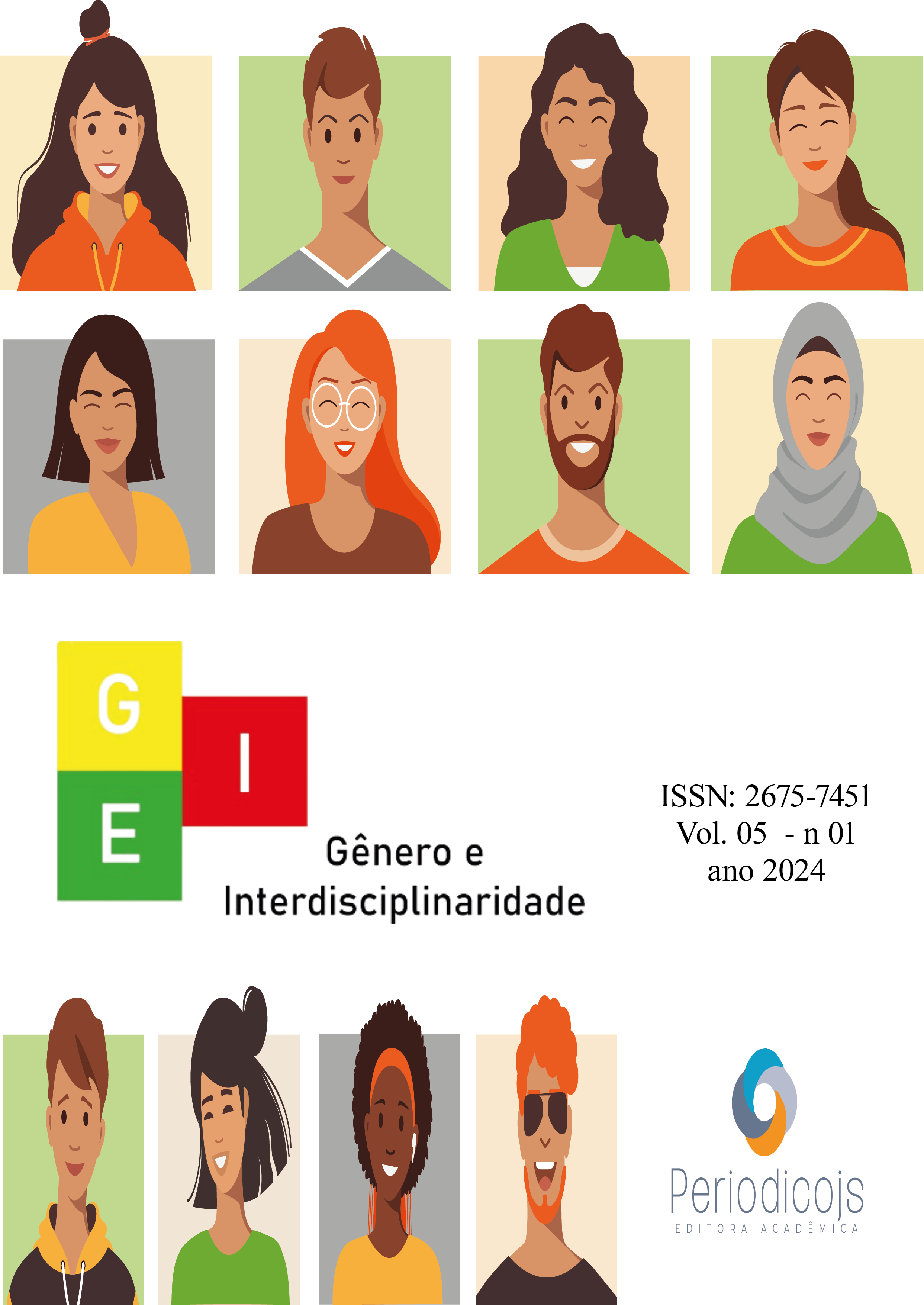Abstract
The Autism is a Pervasive Developmental Disorder characterized by difficulties in the areas of social interaction, communication and behavior. The Autism has no cure, it is generally diagnosed after the age of three and its treatment seeks to bring a better quality of life to the autistic person. Autistic children have difficulty learning in the traditional way, so it is important that teachers give new meaning to the way they teach, using playful materials for more pleasurable and meaningful learning. In this sense, this research sought to verify how the teaching and learning process of children with autism takes place. To do this, it is important to understand what autism is; analyze how the learning process occurs in children with autism and understand the role of play in the learning of children with autism. This research is characterized as qualitative, as it addresses issues that cannot be quantified; To answer the proposed questions and objectives, a bibliographic study will be carried out, based on books and articles relating to the topic; The research is exploratory in nature, so that it is possible to have a global view of the work, as well as its usefulness for research. Therefore, this work is relevant as it can contribute to reflection on the part of society, educators and family members about how the learning process of children with autism takes place and the importance of playfulness in this regard, enabling a new perspective. about education for children with autism.
References
ARIES, P. História Social Da Criança e da Família. 2 Ed. Rio de Janeiro: LTC, 1981.
BORALLI, E. R. Autismo: trabalhando com a criança e com a família. 3ª edição. São Paulo: Edicon/ AUMA, 2008.
BATTISTI, A. V.; HECK, G. M. P. A inclusão Escolar de Crianças com Autismo na Educação Básica: Teoria e Prática. 2015 Disponível em: <https://rd.uffs.edu.br/bitstream/prefix/1251/1/BATTISTI%20e%20HECK.pdf>. Acesso em: 03 fev. 2021.
BEZERRA, M. F. A Importância do Método Aba – Análise do Comportamento Aplicada – no Processo de Aprendizagem de Autistas. Revista Científica Multidisciplinar Núcleo do Conhecimento. Ano 03, Ed. 10, Vol. 06, pp. 189- 204 Outubro de 2018. ISSN:2448-0959. Disponível em: <https://www.nucleodoconhecimento.com.br/educacao/aprendizagem-de- autistas>. Acesso em: 07 set. 2020.
BOSA, C. A. Autismo: Intervenções Psicoeducacionais. Rev. Bras. Psiquiatr., São Paulo , v. 28, supl. 1, p. s47-s53, May 2006. Disponível em: <http://www.scielo.br/scielo.php?script=sci_arttext&pid=S1516- 44462006000500007&lng=en&nrm=iso>. Acesso em: 21 Mar. 2021.
BRASIL. Constituição Federal da República Federativa do Brasil de 1988. Disponível em: < http://www.planalto.gov.br/ccivil_03/constituicao/constituicao.htm>. Acesso em: 28 mar. 2015.
BRASIL. Lei nº 12.764, de 27 de dezembro de 2012. Disponível em: <https://presrepublica.jusbrasil.com.br/legislacao/1033668/lei-12764-12>. Acesso em: 15 Jan. 2021.
BRASIL, Lei nº 8.742, de 07 de dezembro de 1993. Acesso em: 15 Jan.2021.
COTONHOTO, L. A.; ROSSETTI, C. B.; MISSAWA, D. D. A. A importância do jogo e da brincadeira na prática pedagógica. Constr. psicopedag. São Paulo, v. 27, n. 28, p.37- 47, 2019. Disponível em: <http://pepsic.bvsalud.org/scielo.php?script=sci_arttext&pid=S1415- 69542019000100005&lng=pt&nrm=iso>. Acesso em 20 maio 2021.
GIL, A. C. Como elaborar projetos de pesquisa. São Paulo: Atlas, 2010.
KISHIMOTO, T. M. Jogos infantis: o jogo, a criança e a educação. Petrópolis, RJ: Vozes, 1993.
MELLO, A. M. S. R de. Autismo: guia prático. 7ª ed. Brasília: CORDE, 2007. 104 p. Disponível em <http://www.autismo.org.br/site/images/Downloads/7guia%20pratico.pdf>. acesso em: 22 Nov. 2020.
MENDES, M. A. S. A Importância da Ludicidade no Desenvolvimento de Crianças Autistas. 2015. Disponível em: <https://bdm.unb.br/bitstream/10483/15863/1/2015_MariaAlineSilvaMendes_tcc.pdf. Acesso em: 29 jul. 2020.
MINAYO, M. C. de S. (ORG). Pesquisa social: teoria, método e criatividade. 23.ed. Petrópolis: Vozes, 2002.
SANTOS, A. A.; PEREIRA, O. J. A importância dos Jogos e Brincadeiras lúdicas na Educação Infantil. 2019. Disponível em: < https://periodicos.unisantos.br/pesquiseduca/article/download/899/pdf/2362>. Acesso em: 20 ago. 2020.
SANTOS, C. F. dos.; SANTOS, H. C. dos.; SANTANA, M. J. de. O Processo de Aprendizagem de Crianças Autistas. 2016. Disponível em: <https://portal.fslf.edu.br/wp- content/uploads/2016/12/tcc12-3.pdf>. Acesso em: 25/01/2019.
SILVA, A. B. B.; GAIATO, M. B. REVELES, L. T. Mundo singular: entenda o autismo. Rio de Janeiro: Objetiva, 2012.
SILVA, M.; MULICK, J. A. Diagnosticando o transtorno autista: aspectos fundamentais e considerações práticas. Psicologia: Ciência e Profissão [online]. 2009, v. 29, n. 1, pp. 116-131. Disponível em: <https://doi.org/10.1590/S1414-98932009000100010>. Epub 19 Jun 2012. ISSN 1982-3703. Acesso em: 11 abr. 2021.
SCHWARTZMAN, J. S. Transtornos do Espectro do Autismo: Conceitos e Generalidades. In: SCHWARTZMAN, J. S. ; ARAÚJO, C. A, de. Transtornos do Espectro do Autismo. São Paulo: Memmon, 2011. p. 37-42.
TAVARES, N. Ação Lúdica Na Educação Infantil. Colloquium Humanarum, v. 4, n.1, Jun. 2007, p. 01-07. DOI: 10.5747/ch.2007.v04. n1/h030.





